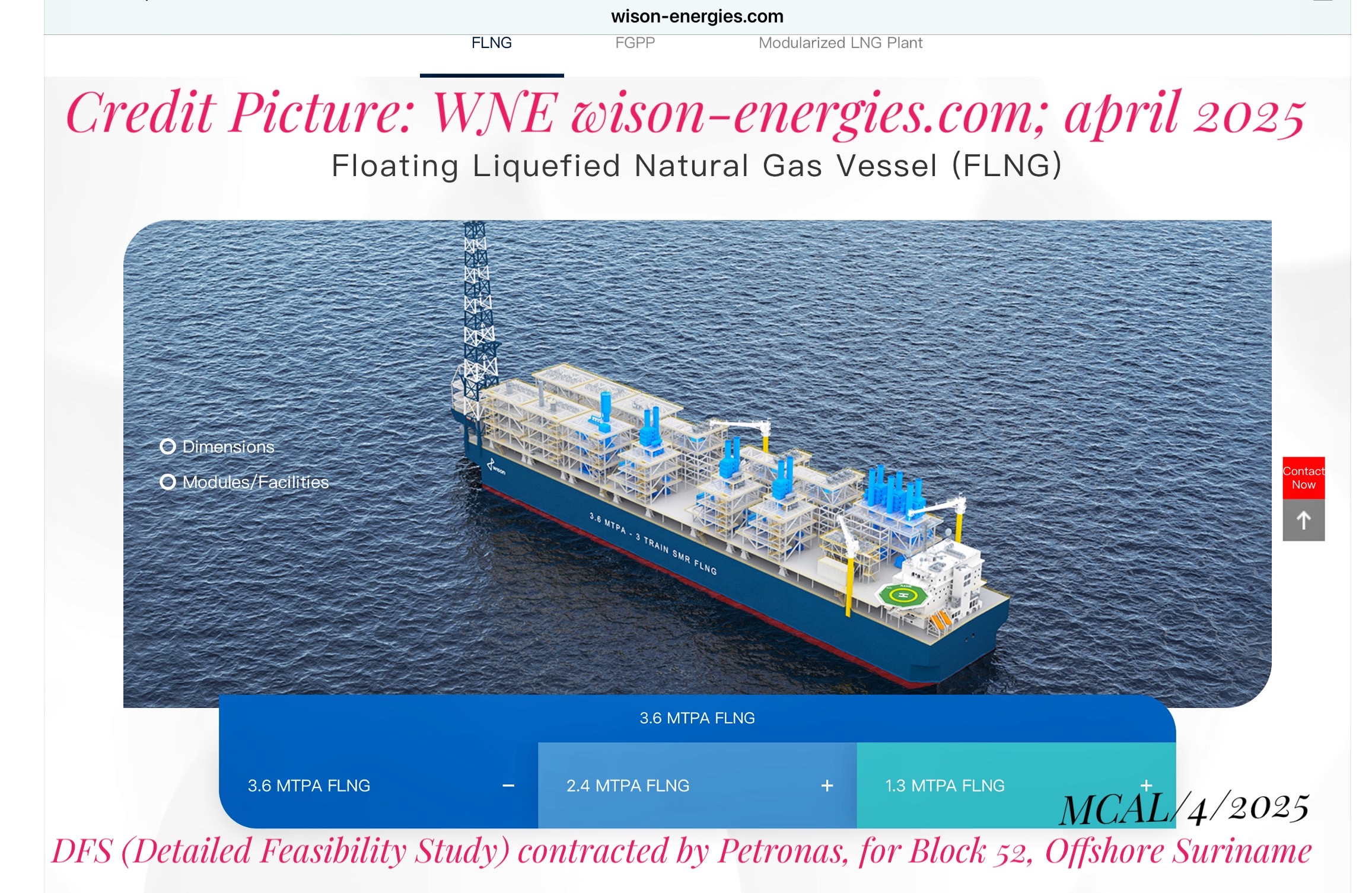How Much Gas Does an FLNG Really Need? A Look at Petronas’ Block 52, Suriname
On April 25th, 2025, Petronas announced a major step forward for its gas discoveries in Block 52, Offshore Suriname.
The company has contracted Wison New Energies (WNE) to deliver a Detailed Feasibility Study (DFS) for a new-build Floating LNG (FLNG) facility.
While exact reserve figures have not yet been released publicly, the project’s momentum suggests Petronas has found a substantial volume of recoverable gas.
For me this raises a timely and fascinating question: How much gas is actually needed to support an FLNG development—and how do you size the facility accordingly?
Understanding FLNG: Production vs Reserves
FLNG plants come in various sizes, but typical new designs fall into three production categories:
- 1.3 MTPA (Million Tonnes Per Annum)
- 2.4 MTPA
- 3.6 MTPA
Each of these capacities requires a different amount of natural gas per year to stay at plateau production. Here’s a simplified breakdown:
| FLNG Size | Gas Consumption | Reserves Needed for 20 Years |
| 1.3 MTPA | ~62 BCF/year | ~1.24 TCF |
| 2.4 MTPA | ~115 BCF/year | ~2.3 TCF |
| 3.6 MTPA | ~173 BCF/year | ~3.46 TCF |
BCF = Billion Cubic Feet
TCF = Trillion Cubic Feet
These figures assume an operational life of around 20 years and standard liquefaction efficiency (~8% loss in conversion), plus allowances for downtime and fuel gas usage.
Applying This to Block 52
Although Petronas hasn’t released official reserve numbers, we can estimate what size of FLNG would be technically and commercially viable based on the expected gas volumes. If they have:
- Around 1.2–1.5 TCF: a 1.3 MTPA FLNG is realistic. This would be a lower-cost, lower-risk entry into Suriname’s emerging LNG sector.
- Roughly 2.3–2.5 TCF: a 2.4 MTPA FLNG could be sustained, offering better export volumes while maintaining a 20-year plateau.
- Over 3.5 TCF: a 3.6 MTPA FLNG becomes feasible, bringing major LNG output comparable to projects like Shell’s Prelude (Australia) or Eni’s Coral South (Mozambique).
- My best educated guess, as of April 2025, is that a 3.6 MTPA FLNG or even larger, will be required.
- This based on my own calculations on the amount of petroleum and gas that was generated and is possibly trapped in this area.
- For this I may refer on other, previous essays on this website.
What’s Next?
The Detailed Feasibility Study will likely confirm Petronas’ preferred FLNG size based on its internal reservoir modeling, gas quality, and commercial strategy. But from a resource standpoint, this much is clear: the size of the gas find determines the size of the facility.
If Petronas moves forward with a 2.4 or 3.6 MTPA unit, it would signal that Block 52 holds a world-class gas resource—and that Suriname is poised to join the elite group of LNG exporting nations.
Stay tuned for updates as Petronas and WNE finalize their plans. This could be the start of Suriname’s offshore gas era.


